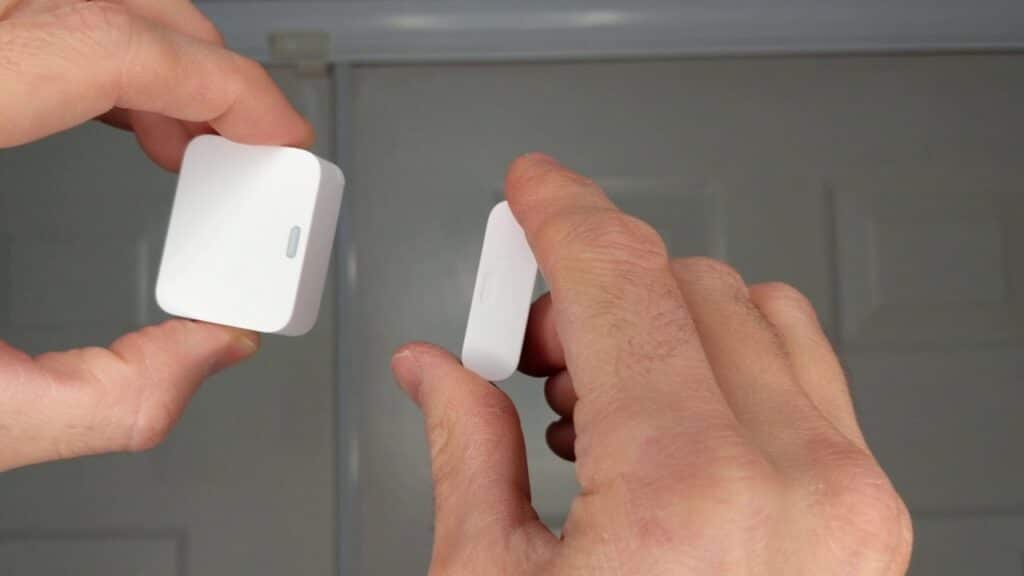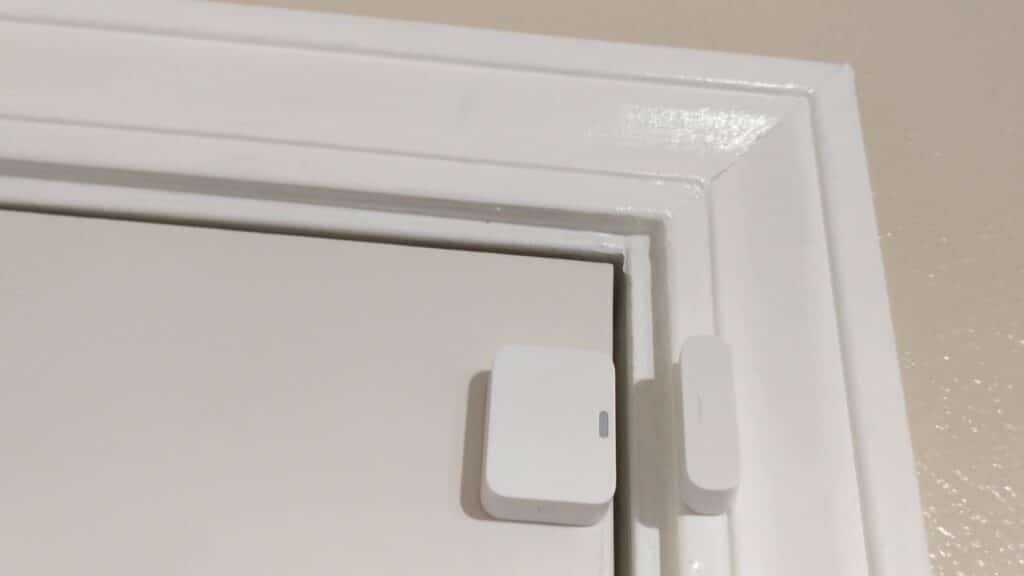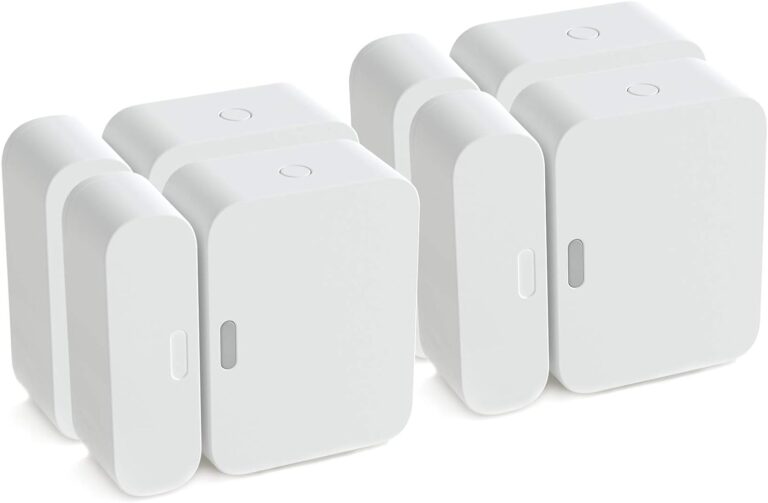Introduction
How To Install Simplisafe Entry Sensor On Windows: Installing a SimpliSafe entry sensor on your windows is a crucial step in ensuring the security of your home or office. With the increasing number of break-ins and burglaries, it has become essential to have a reliable security system in place. SimpliSafe, a leading provider of home security solutions, offers a range of sensors that can be easily installed on windows to detect any unauthorized entry.
Before diving into the installation process, it is important to understand the functionality and benefits of a SimpliSafe entry sensor. These sensors are designed to detect the opening and closing of windows, triggering an alarm if any unauthorized access is detected. They are equipped with advanced technology that ensures accurate detection and reliable performance. By installing these sensors on your windows, you can have peace of mind knowing that your property is protected.
Now, let’s discuss the step-by-step process of installing a SimpliSafe entry sensor on your windows sensor. Firstly, ensure that you have all the necessary components for the installation, including the entry sensor, adhesive strips, and a screwdriver. Start by cleaning the surface of the window frame where you plan to install the sensor. This will ensure proper adhesion and prevent any interference with the sensor’s functionality.
Once the sensor is securely installed, it is important to test its functionality. Arm your SimpliSafe security system and open the window to check if the sensor triggers the alarm. If everything is working correctly, you can proceed to install the entry sensors on other windows in your home or office. Remember to follow the same steps for each window to ensure consistent and reliable security throughout your property.

Do SimpliSafe entry sensors work on windows?
Yes, SimpliSafe entry sensors are designed to work on windows. These sensors are an essential part of the SimpliSafe home security system, which is known for its easy installation and reliable performance. The entry sensors are specifically designed to detect any unauthorized entry through windows or doors, providing an added layer of security for your home.
When it comes to windows, SimpliSafe offers two types of entry sensors: the magnet sensor and the glass break sensor. The magnet sensor is the most common type and consists of two parts – a sensor and a magnet. The sensor is installed on the window frame, while the magnet is placed on the window itself. When the window is closed, the magnet aligns with the sensor, creating a closed circuit. If the window is opened or tampered with, the circuit is broken, triggering an alert to the SimpliSafe base station.
The glass break sensor, on the other hand, is designed to detect the sound of breaking glass. This sensor is typically placed near windows or glass doors and can detect the unique frequency of glass breaking. When the sensor detects this sound, it sends an alert to the base station, notifying you of a potential break-in.
Both types of entry sensors are wireless and battery-powered, making them easy to install and maintain. They communicate with the SimpliSafe base station using a secure wireless connection, ensuring reliable and real-time notifications in case of any security breaches.
In addition to the entry sensors, SimpliSafe also offers other security devices such as motion sensors, cameras, and keypads, allowing you to customize your home security system according to your needs. These devices can be easily integrated with the entry sensors to provide comprehensive protection for your windows and overall home security.
Where do you put sensors on windows?
When it comes to placing sensors on windows, there are a few key factors to consider. The placement of sensors is crucial in ensuring the effectiveness of your security system and maximizing its capabilities. By strategically positioning sensors on windows, you can enhance the overall security of your home or business.
One important consideration is the type of sensor you are using. There are various types of sensors available, including magnetic contact sensors, glass break sensors, and motion sensors. Each type of sensor has its own specific placement requirements. For example, magnetic contact sensors are typically placed on the frame of the window, while glass break sensors are often installed near the glass itself.
Another factor to consider is the number of sensors needed. The number of sensors required will depend on the size and layout of your windows. In general, it is recommended to place sensors on all accessible windows, including ground-level windows, basement windows, and windows on upper floors that are easily accessible.
Placement of sensors should also take into account the potential entry points for intruders. For example, if you have windows that are hidden from view or located in secluded areas, it is important to place sensors on these windows to ensure they are adequately protected. Additionally, windows that are easily accessible, such as those near trees or other structures that could be used to gain entry, should also be equipped with sensors.
Finally, it is important to consider the aesthetics of sensor placement. While security is the primary concern, it is also important to ensure that sensors are discreetly placed and do not detract from the overall appearance of your windows. This can be achieved by using sensors that are color-matched to your window frames or by utilizing wireless sensors that can be easily concealed.
Should I put an entry sensor on every window?
When it comes to home security, one of the most important components is the entry sensor. These sensors are designed to detect when a door or window is opened, alerting you to potential intruders. However, a common question that arises is whether or not you should put an entry sensor on every window in your home. In this article, we will explore the pros and cons of this approach to help you make an informed decision.
Pros of putting an entry sensor on every window:
1. Enhanced security: By placing an entry sensor on every window, you can ensure that every potential entry point is monitored. This can provide you with peace of mind knowing that your entire home is protected.
2. Deterrence factor: The presence of entry sensors on every window can act as a deterrent to potential burglars. Knowing that every window is monitored can make them think twice before attempting a break-in.
3. Early detection: Having sensors on every window allows for early detection of any unauthorized entry. This can give you valuable time to react and take appropriate measures to protect yourself and your property.
Cons of putting an entry sensor on every window:
1. Cost: The main drawback of placing an entry sensor on every window is the cost. Depending on the size of your home and the number of windows, this can be a significant investment.
2. False alarms: With sensors on every window, there is a higher chance of false alarms. Factors such as strong winds or accidental contact with the sensor can trigger an alarm, leading to unnecessary panic or inconvenience.
Should SimpliSafe entry sensors be inside or outside?
SimpliSafe entry sensors are an essential component of any home security system. These sensors are designed to detect when a door or window is opened, alerting homeowners to potential intruders. However, one question that often arises is whether these sensors should be placed inside or outside the home.
Since they are not impacted by wind or rain, sensors within the home can give a more precise readout of when a door or window is opened.
However, installing intrusion sensors outside the property might increase security. These sensors thwart intruders by sensing door and window openings before they enter the residence. Sensors outside the home can provide homeowners piece of mind that their property is being monitored from all aspects.
Individual circumstances and preferences will determine whether to deploy SimpliSafe entry sensors inside or outside the home. Homeowners should consider climate, neighborhood violence, and personal security. Entry sensor installation may be best advised by a security specialist.
How do you screw into SimpliSafe entry sensor?
SimpliSafe is a popular home security system that offers a range of sensors to help protect your home. One of the most commonly used sensors is the entry sensor, which is designed to detect when doors or windows are opened or closed. If you need to install or replace an entry sensor in your SimpliSafe system, you may be wondering how to properly screw it into place.
The first step in screwing in a SimpliSafe entry sensor is to gather the necessary tools and materials. You will need the entry sensor itself, a screwdriver, and the screws that came with the sensor. Make sure you have everything you need before you begin.
Step 1: Start by cleaning the surface of the window where you plan to install the sensor. Use a mild cleaning solution and a soft cloth to remove any dirt or debris. This will ensure a secure and reliable installation.
Step 2: Next, peel off the adhesive backing from the sensor and firmly press it onto the cleaned surface of the window. Make sure to position it in a way that the magnet aligns with the sensor when the window is closed. This will ensure proper functionality.
Step 3: Once the sensor is securely attached to the window, test it to ensure it is working correctly. Open and close the window to see if the sensor detects the movement and triggers the alarm system. If everything is functioning as expected, you have successfully installed the SimpliSafe entry sensor on your window.
Are there any specific tools or equipment required for installing a SimpliSafe entry sensor on windows?
Yes, there are specific tools and equipment required for installing a SimpliSafe entry sensor on windows. To ensure a successful installation, you will need the following:
1. Screwdriver: You will need a screwdriver to remove any existing screws on the window frame and to secure the sensor in place.
2. Double-sided adhesive tape: This tape is used to attach the sensor to the window frame without the need for screws. It provides a secure and non-permanent installation option.
3. Alcohol wipes: It is important to clean the window surface before attaching the sensor. Alcohol wipes help remove any dirt or residue that may affect the adhesive’s effectiveness.
4. SimpliSafe entry sensor: Of course, you will need the actual entry sensor itself. This is the device that detects when a window is opened or closed and sends a signal to your SimpliSafe security system.
By having these tools and equipment ready, you can ensure a smooth and hassle-free installation process for your SimpliSafe entry sensor on windows.
Can you provide a detailed guide or tutorial on how to install a SimpliSafe entry sensor on windows?
Sure! Here is a step-by-step guide on how to install a SimpliSafe entry sensor on windows:
Step 1: Start by gathering all the necessary tools and equipment. You will need a screwdriver, double-sided adhesive tape, and the SimpliSafe entry sensor kit.
Step 2: Clean the surface of the window where you plan to install the sensor. Use a mild cleaning solution and a cloth to remove any dirt or debris. Make sure the surface is dry before proceeding.
Step 3: Take the SimpliSafe entry sensor and remove the adhesive backing from the back of the sensor. Press the sensor firmly onto the desired location on the window. Make sure it is aligned properly.
Step 4: If the sensor comes with screws, use the screwdriver to secure the sensor in place. This will provide extra stability and ensure that the sensor stays in position.
Step 5: Test the sensor to make sure it is working properly. Open and close the window to see if the sensor detects the movement. If it does, you have successfully installed the SimpliSafe entry sensor on your window.
Step 6: Repeat the process for any additional windows where you want to install entry sensors.
By following these steps, you can easily install a SimpliSafe entry sensor on windows and enhance the security of your home.
Are there any precautions or safety measures to consider while installing a SimpliSafe entry sensor on windows?
When installing a SimpliSafe entry sensor on windows, it is important to take certain precautions and follow safety measures to ensure a successful and safe installation. Firstly, before starting the installation process, make sure to read and understand the manufacturer’s instructions and guidelines provided with the sensor. This will give you a clear understanding of the installation process and any specific safety precautions that need to be followed.
One important safety measure to consider is to turn off the power supply to the window before installing the sensor. This will help prevent any electrical accidents or damage to the sensor. Additionally, it is recommended to wear protective gloves and goggles while handling the sensor to protect yourself from any potential injuries.
Another precaution to keep in mind is to avoid installing the sensor on windows that have a high risk of breakage or are frequently opened and closed. This can help prevent accidental damage to the sensor and ensure its longevity. It is also important to ensure that the sensor is securely attached to the window using the provided adhesive or mounting brackets to prevent it from falling off or getting dislodged.
Are there any troubleshooting tips or common issues that may arise during the installation of a SimpliSafe entry sensor on windows?
When installing a SimpliSafe entry sensor on windows, there are a few common issues that you may encounter. One of the most common issues is improper alignment of the sensor and magnet. It is important to ensure that the sensor and magnet are properly aligned and that there is no gap between them. If there is a gap, the sensor may not detect when the window is opened or closed.
Another common issue is interference from other devices. If you are experiencing issues with the sensor not working properly, it is possible that there may be interference from other devices in the area. Try moving any nearby devices away from the sensor to see if that resolves the issue.
Additionally, it is important to check the batteries in the sensor regularly. If the batteries are low, the sensor may not function properly. Make sure to replace the batteries as needed to ensure that the sensor is working correctly.

Conclusion
Firstly, it is important to gather all the necessary tools and materials before beginning the installation process. This includes the SimpliSafe entry sensor, a screwdriver, and any additional adhesive strips or screws that may be required. By having everything prepared beforehand, you can save time and avoid any unnecessary delays during the installation.
Next, carefully read the instructions provided by SimpliSafe to understand the specific steps involved in installing the entry sensor on windows. These instructions will typically include information on where to place the sensor, how to attach it securely, and how to test its functionality. By following these instructions closely, you can ensure that the sensor is installed correctly and will effectively detect any unauthorized entry through your windows.
Finally, it is important to test the entry sensor after installation to ensure that it is functioning properly. This can be done by opening and closing the window to trigger the sensor and checking if the alarm system is activated. If the sensor does not respond as expected, double-check the installation and consult the SimpliSafe support team for further assistance.
A SimpliSafe entry sensor on windows is a straightforward process that can greatly enhance the security of your home. By carefully following the provided instructions and testing the sensor after installation, you can have peace of mind knowing that your windows are protected from potential intruders.

